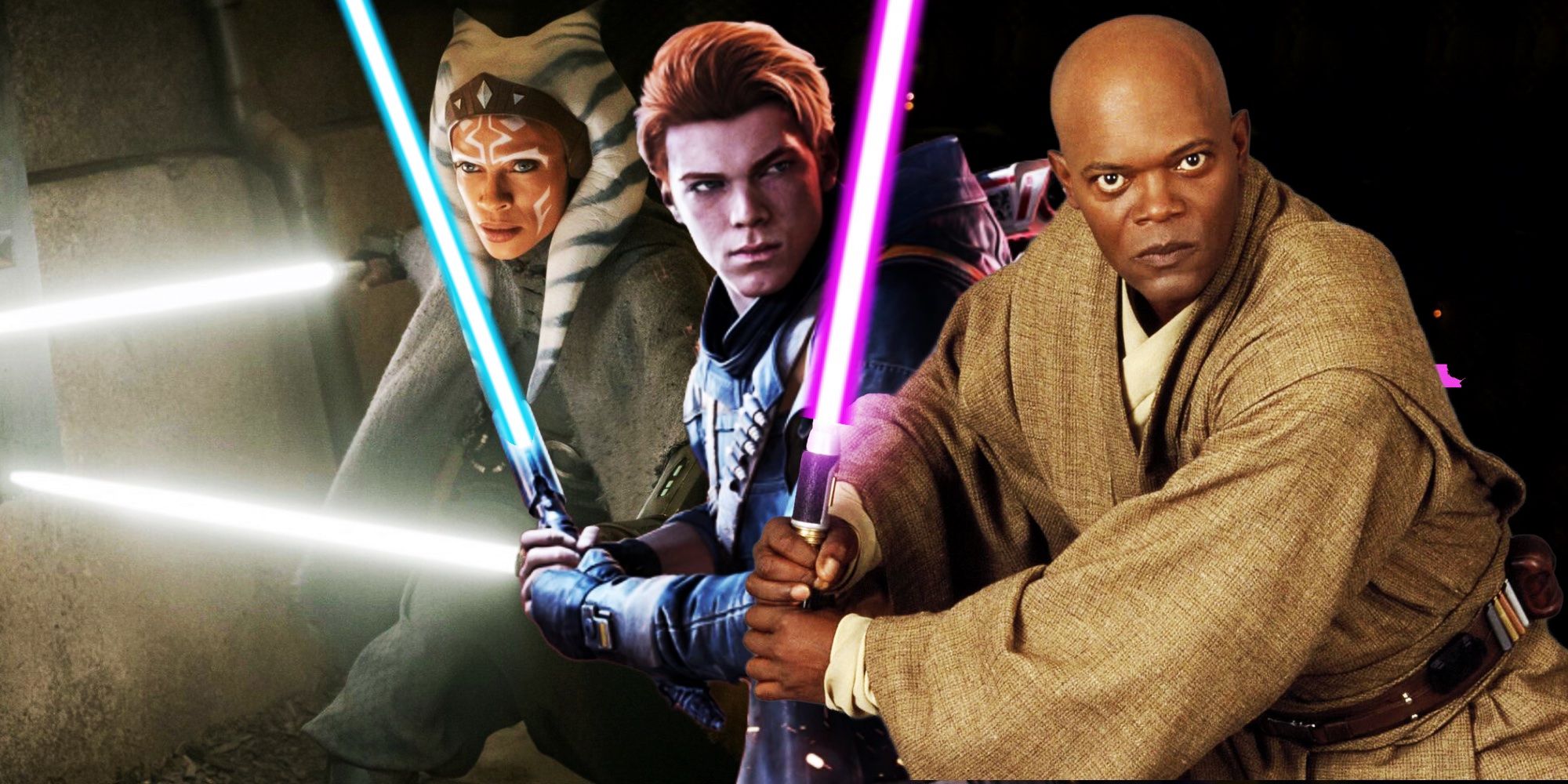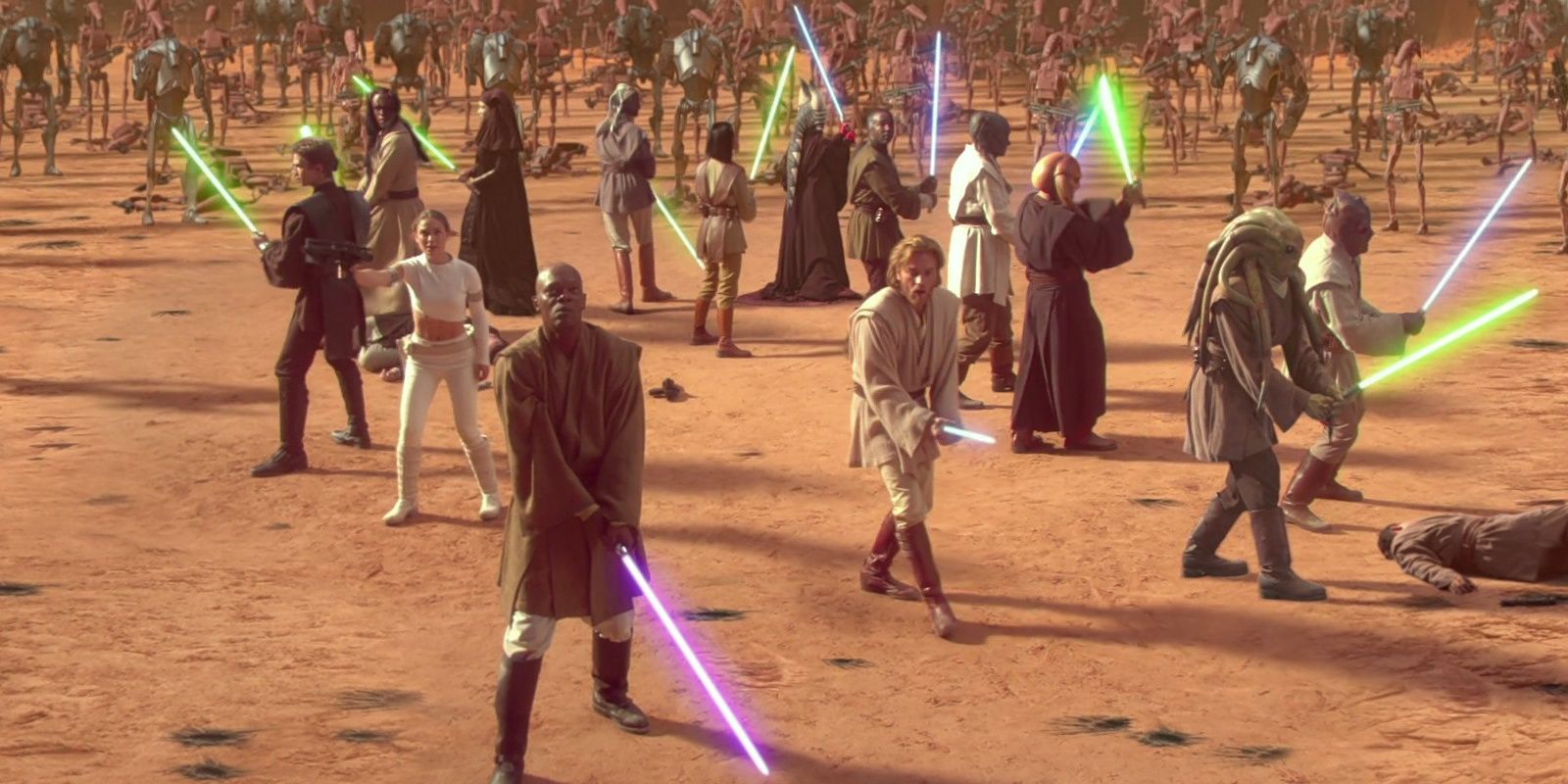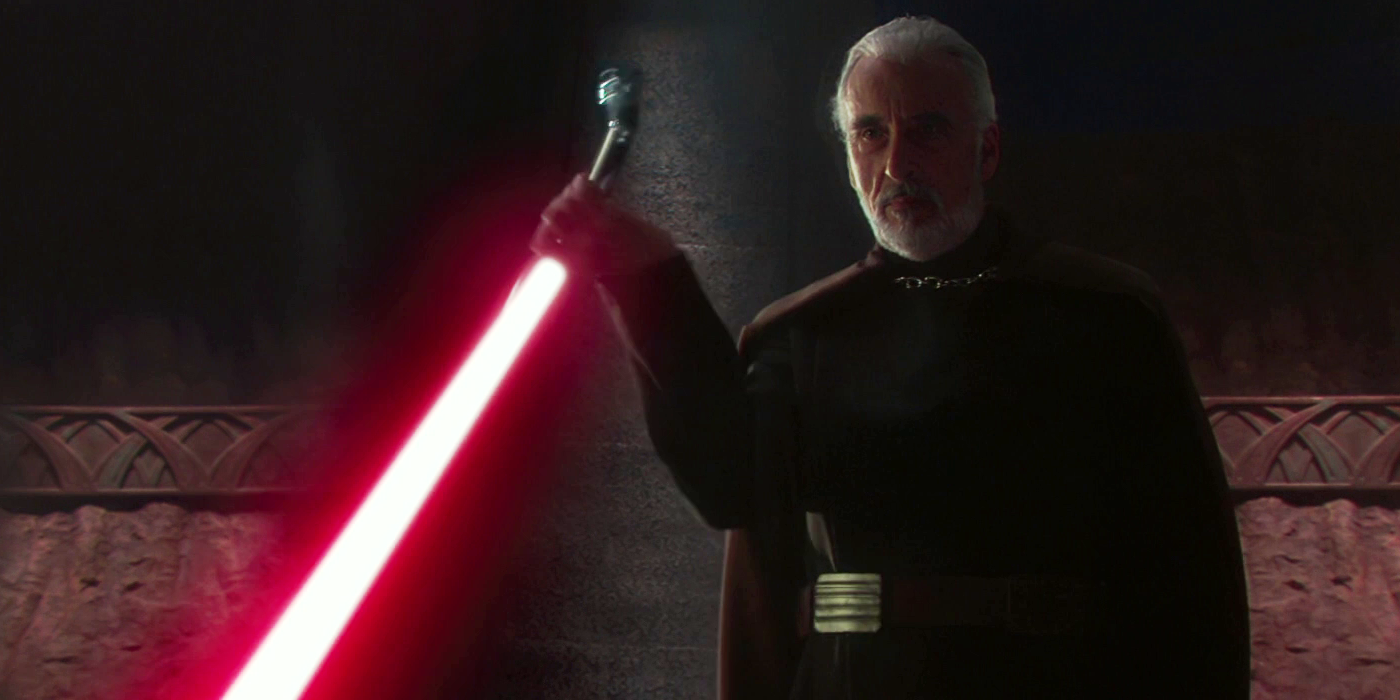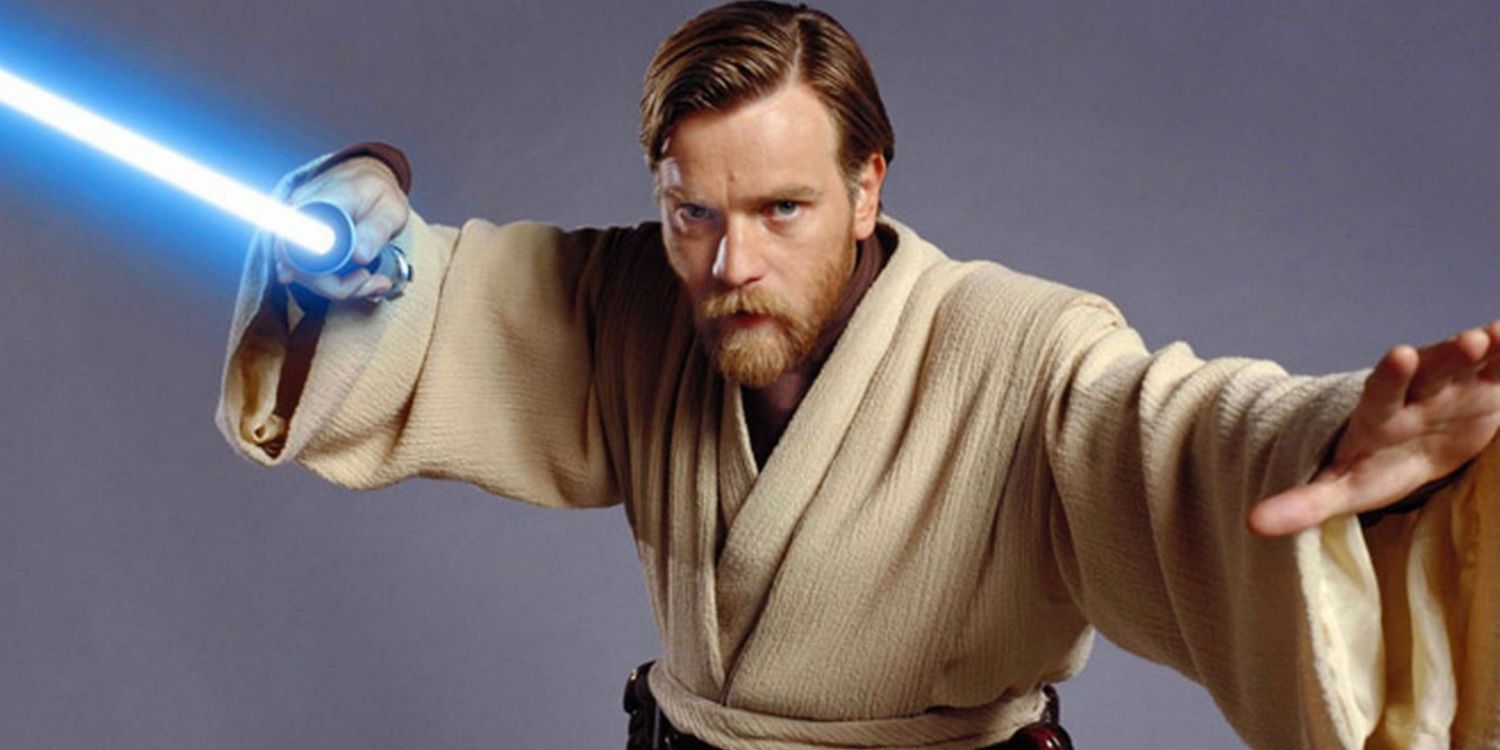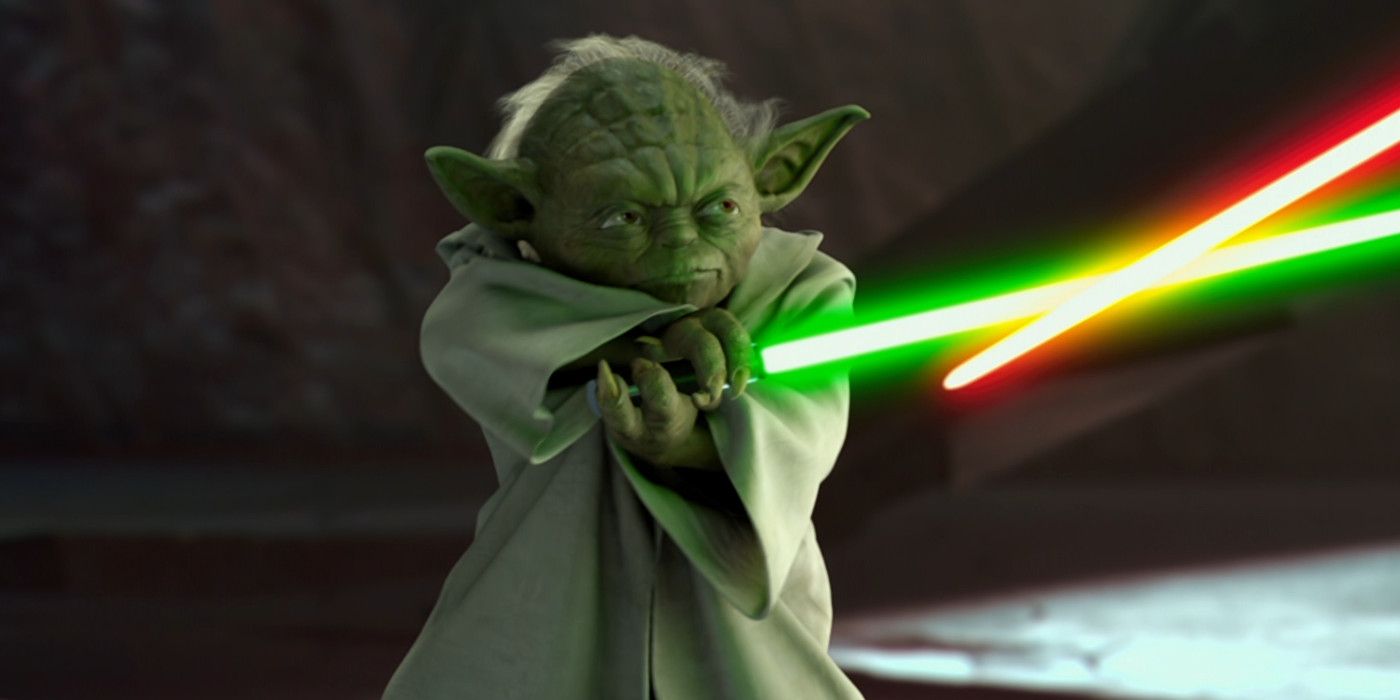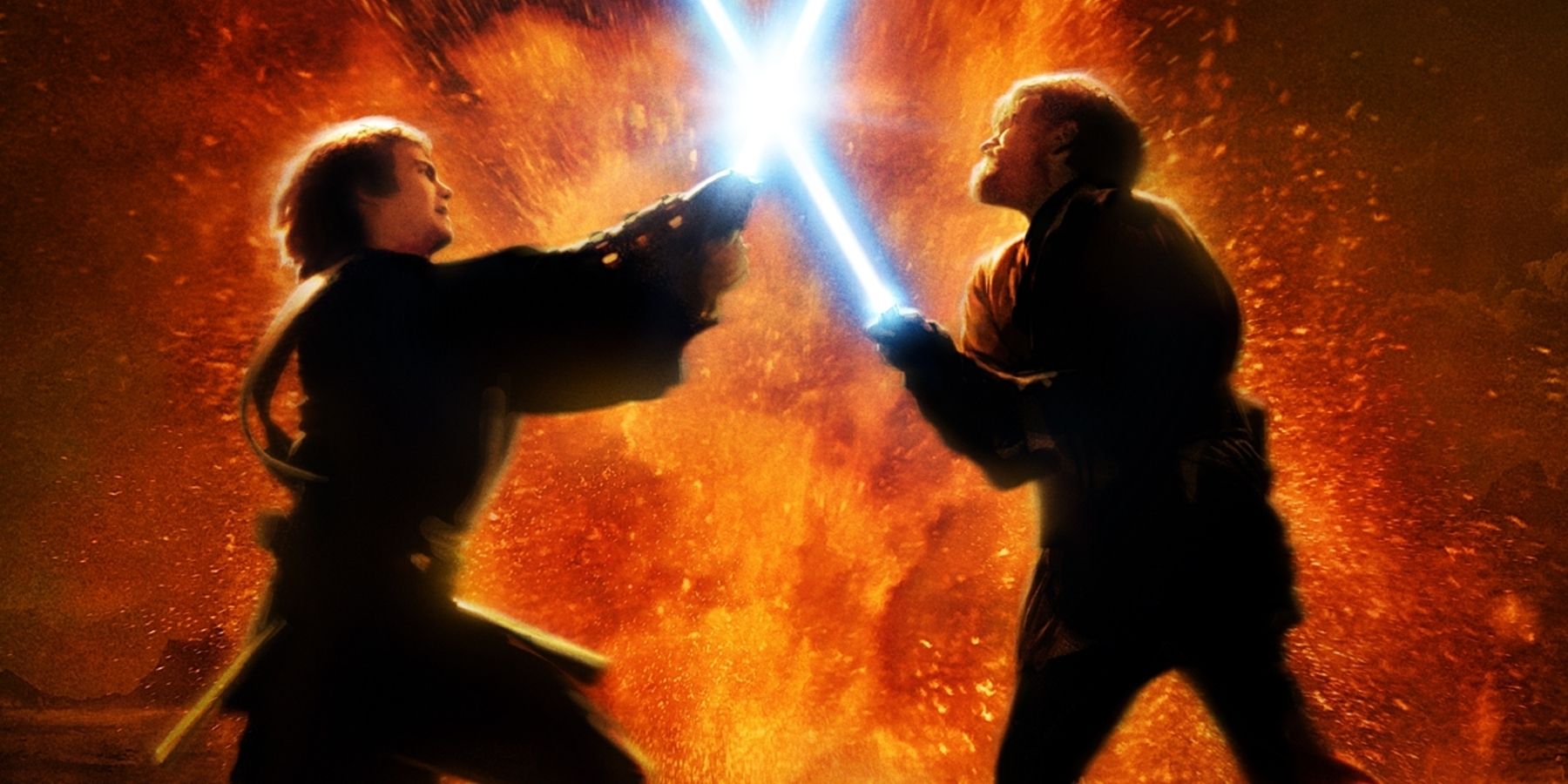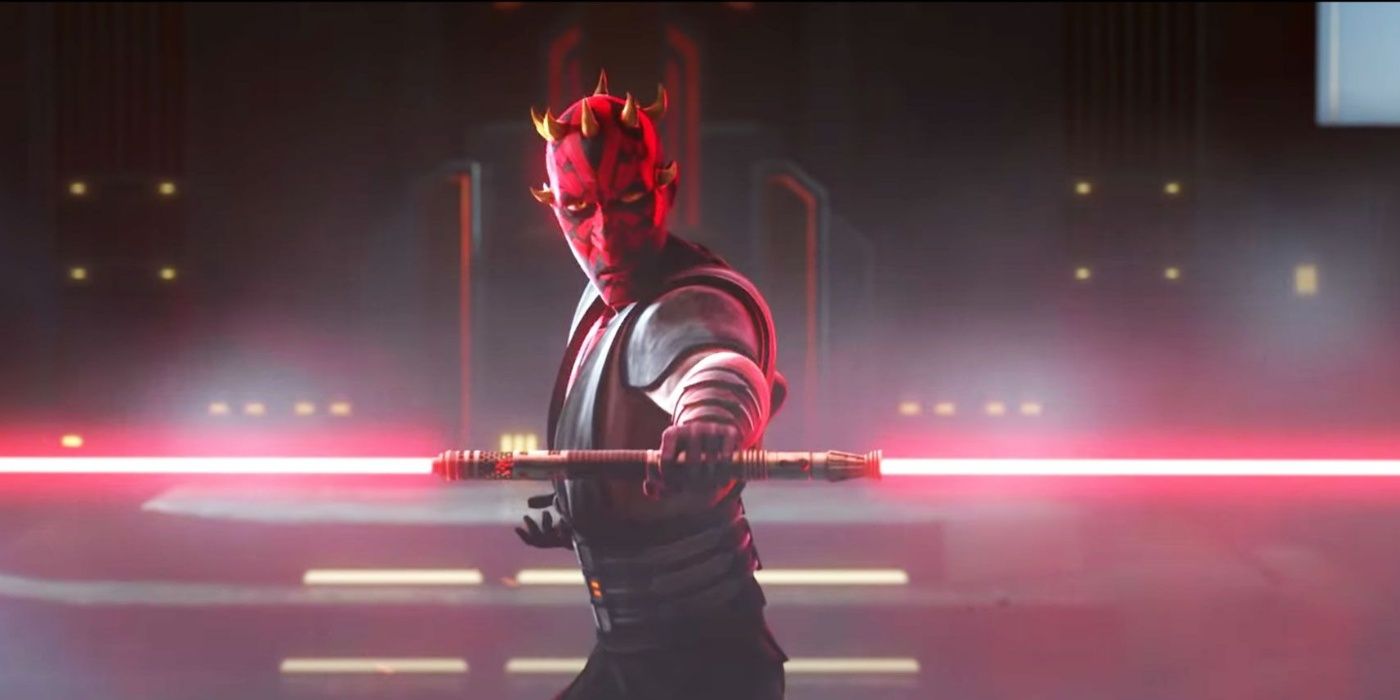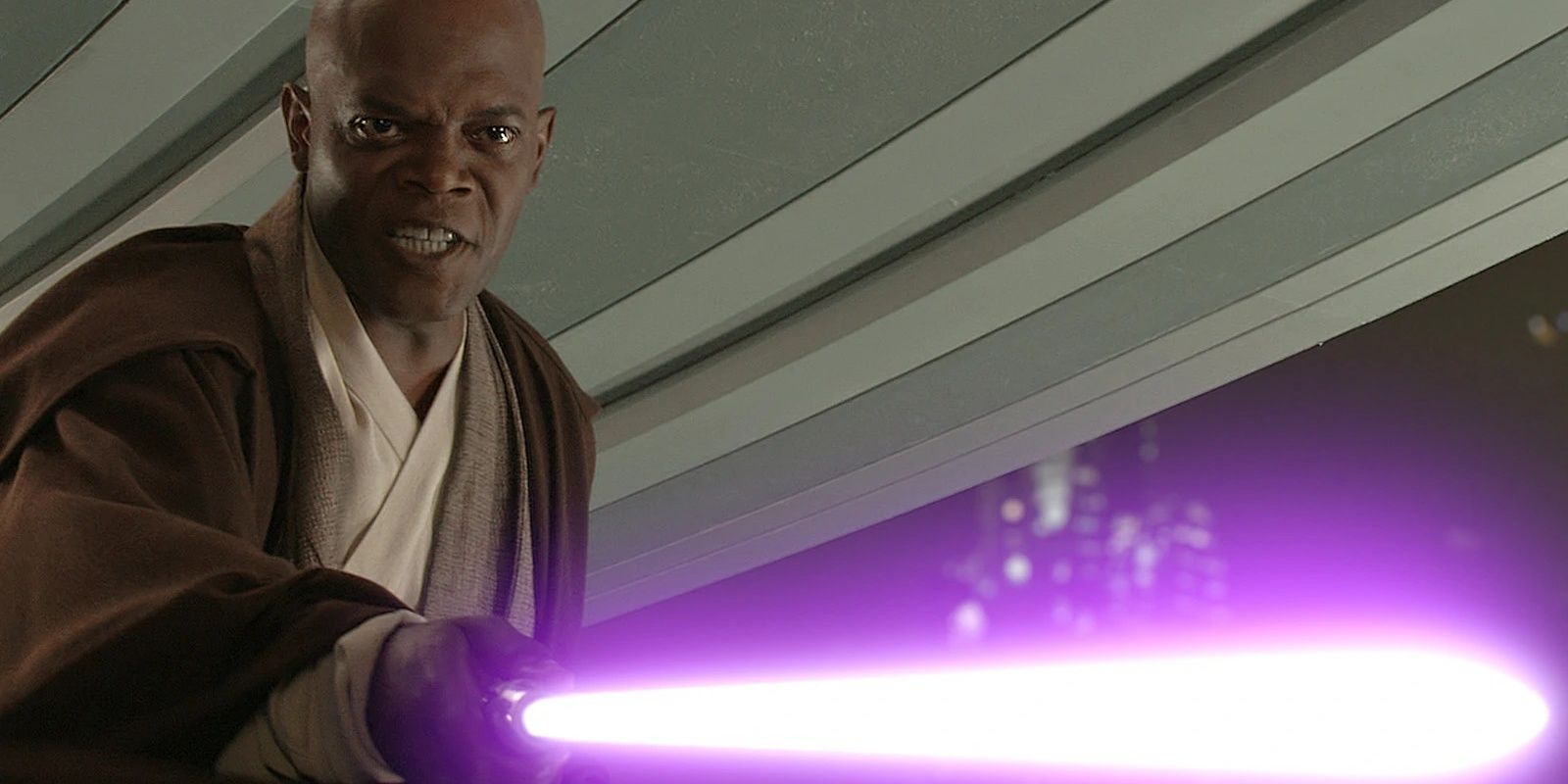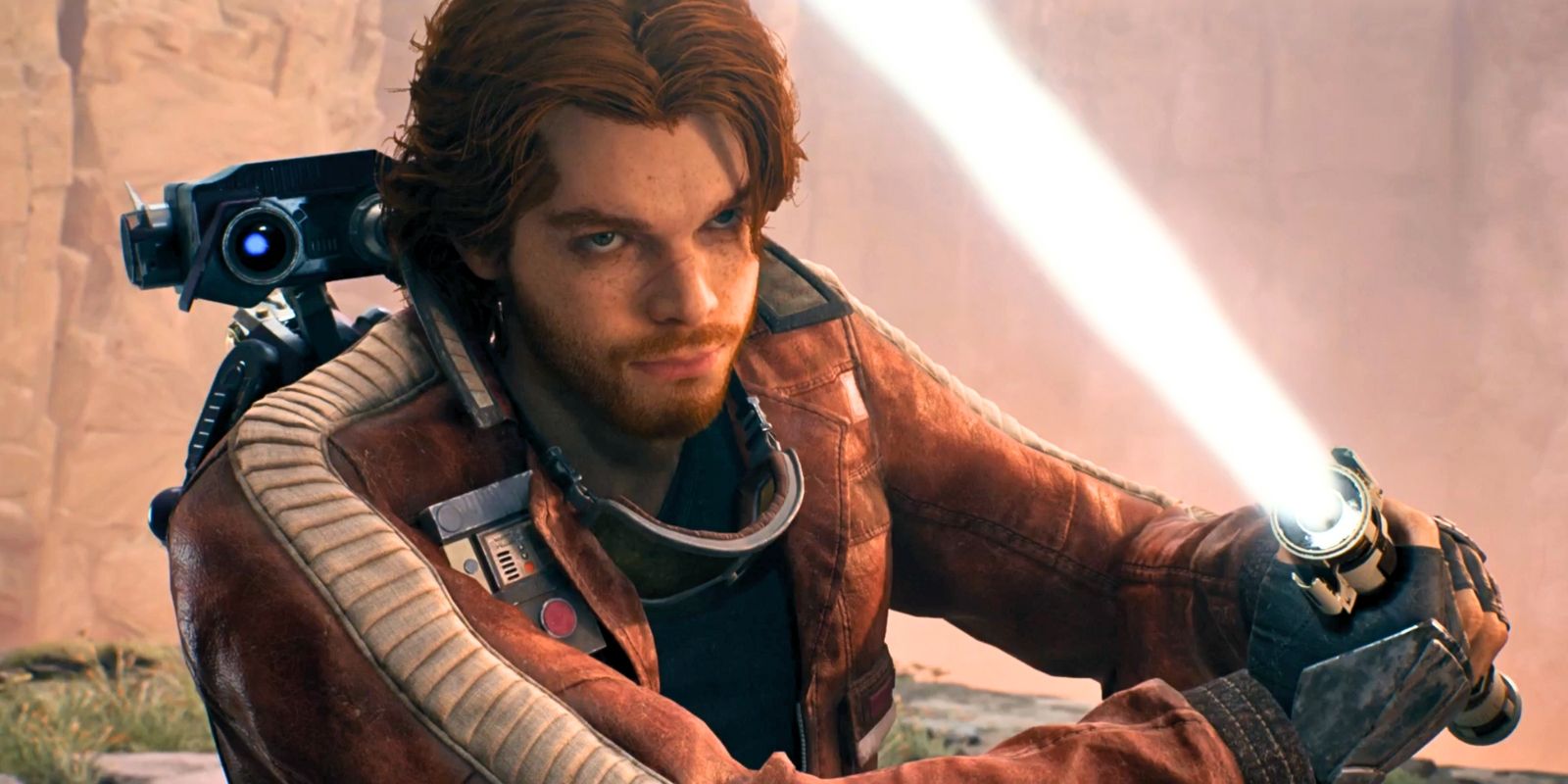Summary
- Lightsaber combat is an art form and a symbol of Jedi traditions, reflecting mastery of the Force and extending to various lightsaber types.
- Jedi Padawans experiment with different lightsaber forms to find their preferred style, just as they choose lightsaber colors.
- The best Jedi master multiple forms and switch between them when needed, a concept that can be explored in future Star Wars movies.
Star Wars' lightsaber is the traditional weapon of the Jedi and the Sith, and there are seven different lightsaber forms in canon. When Luke Skywalker first saw his father's lightsaber, he was fascinated by it. "This is the weapon of a Jedi Knight," Obi-Wan Kenobi explained to him. "Not as clumsy or as random as a blaster. An elegant weapon for a more civilized time." This was just the beginning of Obi-Wan's lightsaber lessons as lightsaber combat is an art form; it is a symbol of Jedi traditions as well as a reflection of one's mastery of the Force that extends into Star Wars' various lightsaber types.
During the prequel era, Padawans were encouraged to experiment with all lightsaber forms in order to find the one that suited them the most just as Apprentices favored different lightsaber colors in Star Wars canon. Some forms are better suited to combat, while other forms rely on defense. The Clone Wars saw many Jedi switch to combative forms while the galaxy was at war, whereas characters like Luke and Leia use Vader's form since it's what they have experience with. The best Jedi in the galaxy master multiple lightsaber forms and switch between them when the need arises, something that could be further explored in upcoming Star Wars movies.
1 Form I: Shii-Cho
Shii-Cho is generally regarded as the oldest and most elementary lightsaber form; as a result, almost every Jedi begins by learning Shii-Cho, and will often fall back on this fighting style in the case that all other techniques have failed. Practically all the Jedi seen in Star Wars: The Clone Wars resort to Shii-Cho on occasion. This can also be observed when Jedi were cornered during Order 66's execution.
Form I is basic but effective, and it can appear quite brutal and aggressive because it involves a fast flurry of strikes. While Sith learn Shii-Cho, they usually abandon it in favor of more aggressive forms. However, the basic appearance of Shii-Cho can be misleading because a Jedi only really becomes a master of Form I when they have attained inner peace which enables Jedi to utilize the lightsaber blade as an extension of their being.
2 Form II: Makashi
First developed when lightsabers started becoming more common among both the Jedi and the Sith, Makashi - or Form II - is a graceful lightsaber style suited to only the most skilled of duelists. Relying on careful and controlled strikes instead of power and strength, Form II is dedicated to getting the upper hand in one-on-one duels. Makashi has also been designed to accommodate more experimental lightsaber designs.
These designs include the crossguard lightsabers common during the Hundred Years of Darkness or even the use of a second shoto blade as exemplified by characters like Ahsoka Tano. Makashi fell out of fashion when the Sith were believed to be extinct, yet there were still some Jedi who practiced it, including Ki-Adi-Mundi. Count Dooku was another who was a master of Makashi as typified by his galaxy-wide reputation as a fearsome lightsaber duelist. Indeed, that pride may well have been one of the things that led Dooku to the dark side as he reverted Form II to the ways of the Sith.
3 Form III: Soresu
Form III is named Soreus and was generally believed to have been developed in response to the growing number of blasters in the galaxy. The reason for this stems from Form III being the style that accounts for how Jedi reflect blaster bolts using lightsabers. By the time of the prequel trilogy, all Jedi were trained in Soresu in part because this is actually a tremendously useful exercise.
Luke Skywalker notes in the in-universe guidebook Secrets of the Jedi: "At first, [Padawans'] primary focus was defense, learning to block laser blasts while wearing special helmets that obscured their sight. By doing so, they could learn to let the Force be their guide." Obi-Wan Kenobi was renowned for his use of Soresu and Kanan Jarrus was also skilled in the form. Luke Skywalker was also well-versed in Form III considering Obi-Wan was his Master and his first lightsaber usage in the Skywalker Saga comes from deflecting blaster bolts aboard the Millennium Falcon in A New Hope.
4 Form IV: Ataru
Ataru is one of the most aggressive forms of lightsaber combat, relying heavily on Force-assisted acrobatics. As such, Form IV has only been mastered by Jedi who are strongest in wielding the Force. Similar to Makashi, Ataru is at its best during one-on-one duels, when the master of Form IV attempts to conclude a duel as swiftly as possible.
The best Ataru masters ricochet around their environment, launching sweeping strikes that seem to come out of nowhere and thus forcing an opponent to be on the defensive. Ataru was used by Yoda in his duel with Count Dooku in Star Wars: Episode II - Attack of the Clones as well as the Jedi Grand Master’s climactic conflict against Darth Sidious in Star Wars: Episode III - Revenge of the Sith. Due to Ataru’s aggressive nature, many of its masters have proved susceptible to the seduction of the dark side, accounting for Form IV's popularity among the Sith all while exemplifying Yoda’s strength not to be consumed despite his reliance on Ataru.
5 Form V: Shien & Djem So
Shien and Djem So were developed by practitioners of Form III who saw the need for a more offensive edge. Shien is designed for distance, allowing practitioners to swat back blaster bolts, while Djem So is designed for blade-on-blade combat. It uses an unconventional reverse grip, which is why Ahsoka Tano favored Djem So. Shien and Djem So incorporate many of Form III's strengths, including the use of solid blocks, parries, stronger counterattacks, and ripostes.
Form V's adaptiveness led to it becoming Anakin Skywalker’s favorite form. Interestingly, many Jedi felt that Shien and Djem So were not faithful to the Jedi way as it came perilously close to using the Force for offense rather than defense. This fits with another user of Form V within Star Wars canon: Ahsoka's Baylan Skoll. His training as a Jedi and subsequent abandonment of the Order means that it makes perfect sense for him to use Shien and Djem So in combat with his action sequences in Ahsoka making it clear that Baylan uses a modified version of Form V to account for the weight of his unusually-constructed lightsaber.
6 Form VI: Niman
Form VI, Niman, is often viewed as a synthesis of previous forms. It was the last form to gain widespread acceptance among the Jedi and emphasizes balance in the Force. According to the Knights of Fate sourcebook, the Jedi who developed Niman wanted to triumph without dominating their opponent.
They wanted to defend themselves and even deliver justice without the temptation of power. It is surprising, therefore, that Darth Sidious' apprentice, Darth Maul, depended on Niman in Star Wars: Episode I - The Phantom Menace, suggesting that his teacher deliberately subverted the Jedi's favored combat style. Indeed, a Niman practitioner frequently blends lightsaber combat with the use of the Force itself and, as such, this form became popular with many Jedi who were disinterested in the art of combat alone.
7 Form VII: Juyo (or Vaapad)
The final lightsaber combat form, Juyo, is the most controversial. According to various sourcebooks, it probably originated millennia before the Skywalker Saga as an outgrowth of Form I. Unlike other forms, Juyo encouraged Jedi to embrace their emotions and use them to fuel a relentless assault.
Consequently, Form VII was outright banned by the Jedi for a long time. However, Jedi Master Mace Windu took it upon himself to refine Juyo into an offshoot known as Vaapad: the perfection of Form VII. Windu developed Vaapad to control his inner darkness and channel it into goals worthy of the Jedi, bridging the gap between light and dark. Nevertheless, he was wary of teaching others Vaapad, lest they fail to master it as he had done and thus succumb to their emotions rather than control them as the Jedi Master could.
8 Lightsaber Forms After Order 66
The Jedi Order honed the seven lightsaber forms to perfection until Order 66 wiped them out. With the Jedi gone, so too went much of the knowledge and wisdom regarding form categorization. This led many aspiring Jedi—such as Cal Kestis in Star Wars Jedi: Survivor and Ezra Bridger from Star Wars Rebels—to mix together various elements of all seven lightsaber forms. Since they lacked the proper training, many Jedi after Order 66 had to make do with what little they knew. Of course, their combination of lightsaber forms often resulted in weakness in some areas, which led Kestis and Bridger to use blasters in order to compensate.
With the rise of the Empire, the Jedi religion fell into myth in the minds of most of the galaxy's everyday citizens. While some of the canon Order 66 survivors, such as Ahsoka Tano, kept their forms alive, little of what they knew was passed onto the next generation of Jedi. However, now that she has the sacred Jedi Texts, Rey Skywalker's new Jedi Order could bring back the common practice of the seven lightsaber forms. With James Mangold's Dawn of the Jedi Era film on the way as well, viewers might get to see the live-action birth of lightsaber forms in the Star Wars universe.

